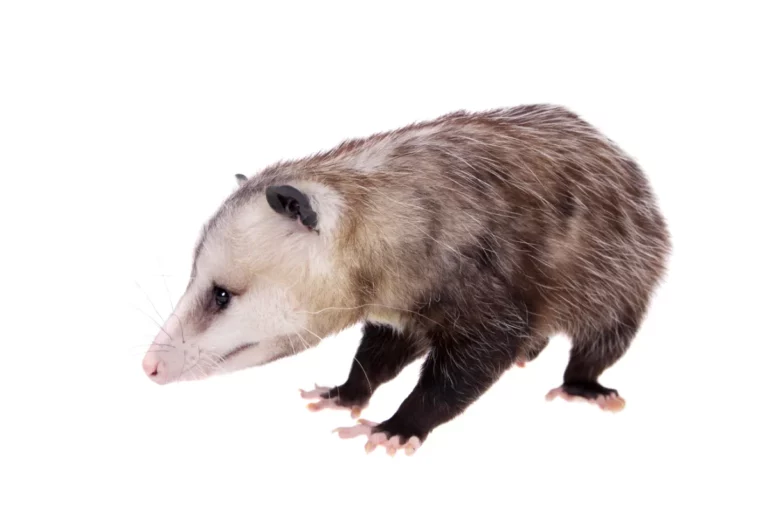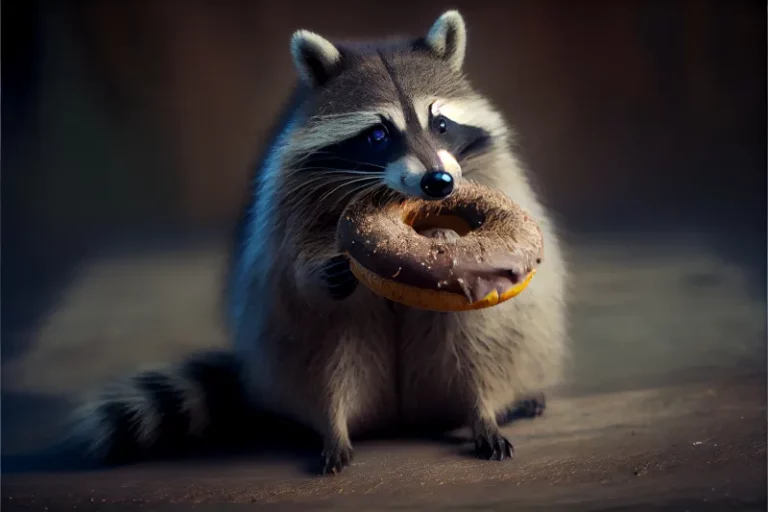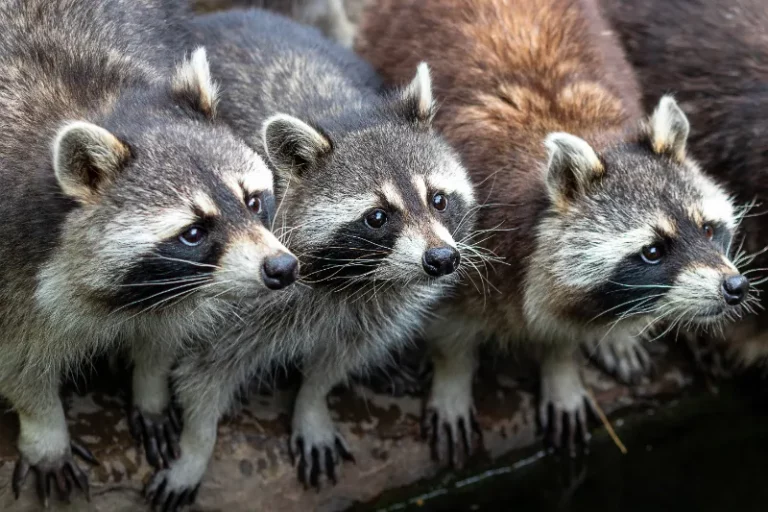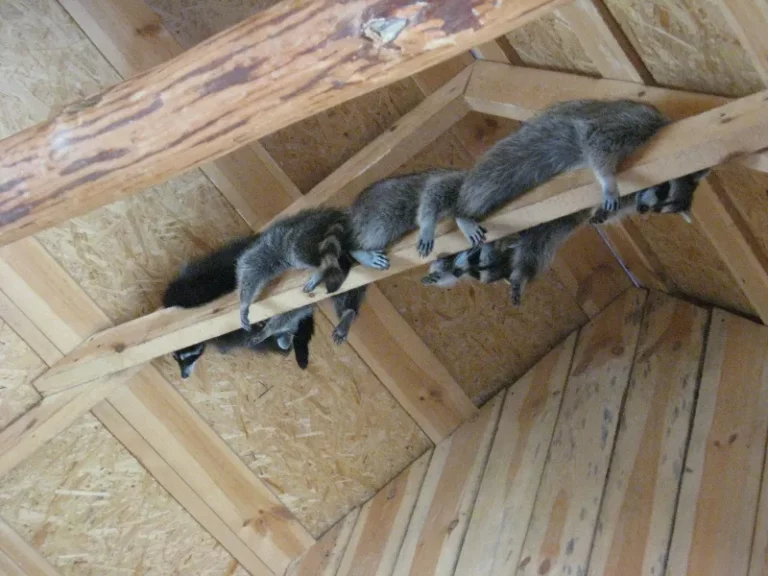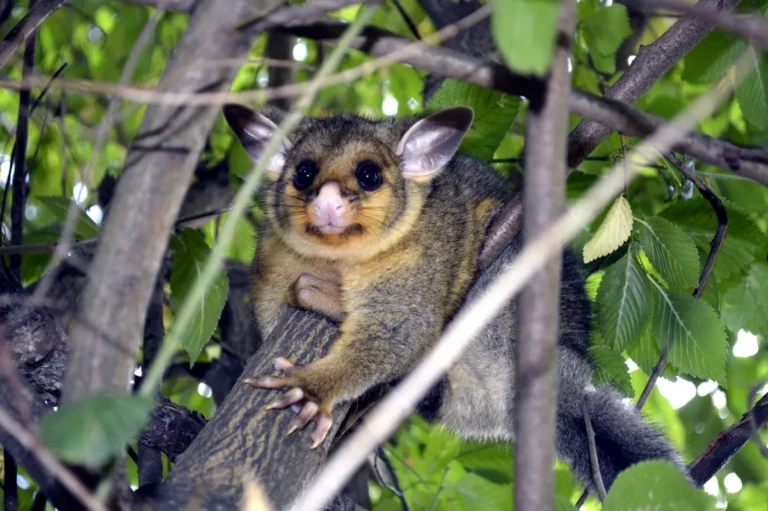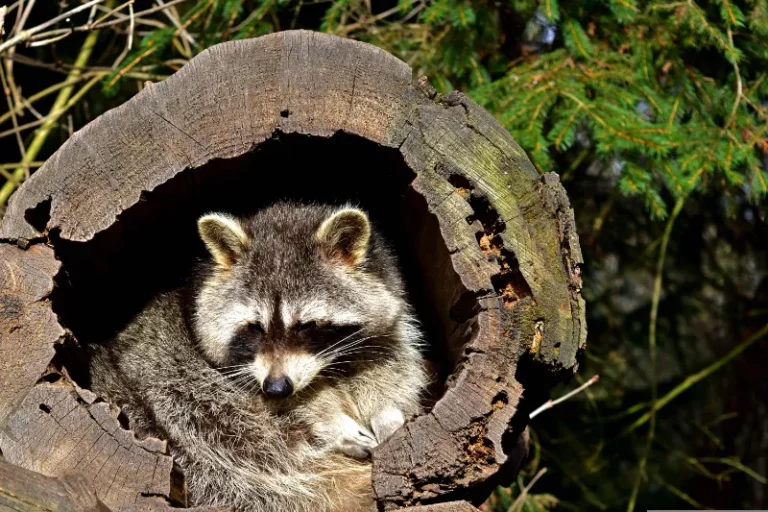Possum vs Raccoon: 8 Vital Contrasts Unveiled
Are you curious about the differences between possums and raccoons? These two nocturnal animals have some similarities but have several distinctive features that set them apart.
Did you know raccoons are more commonly found in urban areas than opossums?
Raccoons are so adaptable to human presence that they are often considered pests and nuisances. It’s important to note that raccoons can carry rabies, a danger to humans.
Possums, or opossums, on the other hand, are more commonly found in rural areas and wooded environments.
They are known for their ability to play dead when threatened, a behavior known as ‘playing possum.’ With their distinctive tails, Raccoons can also be found in these environments. However, caution should be taken as they may threaten humans.
But possums and raccoons have many other differences besides their habitats.
This article will explore eight critical differences between these two fascinating creatures, exploring their physical characteristics, behavior, and more.
Key Takeaways
- Possums are primarily herbivores, while raccoons are omnivorous and focus more on meat.
- Raccoons are more commonly found in urban areas than possums.
- Possums are generally solitary creatures, except during mating season, while raccoons may live in small family groups or larger communities in urban areas.
- Both possums and raccoons are considered vital species in their respective habitats and significantly impact the environment.
Possum vs. Raccoon:
Let’s get ready to rumble as we pit the sneaky raccoon against the scrappy possum in a battle for the title of backyard bandit!
While both creatures are known for their stealthy ways and ability to rummage through garbage cans, they have distinct differences in their dietary preferences, survival tactics, physical adaptations, population dynamics, and ecological significance.
The raccoon is a known omnivore, eating both plant and animal matter. They raid gardens and trash cans for food and hunt small animals such as birds, frogs, and fish.
Raccoons are also adept at climbing trees and swimming, making them highly adaptable to different environments.
On the other hand, possums are primarily herbivores, feeding on fruits, nuts, and leaves. They’re also known to scavenge for carrion and insects. Possums use their sharp claws and prehensile tail to climb trees and evade predators.
While their population dynamics are not as well-studied as raccoons, possums are known to play an essential role in their ecosystem by helping to control insect populations.
1) Physical Characteristics
Take a closer look at their appearances, and you’ll notice distinct differences between the two critters. Here are some physical characteristics that set them apart:
1. Size Comparison: Possums are generally smaller than raccoons, with adult possums weighing around 5-14 pounds and adult raccoons weighing around 10-30 pounds.
2. Locomotion Techniques: Possums are known for their slow, lumbering gait. At the same time, raccoons are much more agile and can easily climb trees and swim.
3. Sensory Abilities: Raccoons have sensitive paws that allow them to feel their way through dark environments and locate food. In contrast, possums have a highly developed sense of smell that helps them find food.
In addition to their physical differences, possums and raccoons have natural predators such as coyotes, foxes, and owls. However, their ability to adapt to various environments has allowed them to thrive in many areas across North America.
2) Habitat and Distribution
You may be surprised that these two creatures have a wide range of habitats and can be found in many parts of North America.
While raccoons prefer wooded areas near water sources, possums are more adaptable. They can live in various habitats, including forests, farmlands, and suburban areas.
They are also found in warm and cool climates, from the southern United States to Canada.
Both species have adapted to their habitats and developed different food sources.
Raccoons are omnivores who eat anything from fruits and nuts to small animals and insects.
Conversely, possums are opportunistic feeders and eat almost anything, including carrion, insects, fruits, and vegetables.
They are also known to have a unique adaptation where they can eat poisonous plants that other animals cannot.
Despite their diverse habitats and food sources, both species have natural predators such as coyotes, foxes, and birds of prey.
3) Behavior and Lifestyle
Suppose you’re lucky enough to spot a possum or raccoon in the wild. In that case, there are a few key differences in their behavior and lifestyle. Here are three things to look out for:
1. Dietary preferences: Possums are omnivores and will eat pretty much anything, including insects, fruit, and even carrion. Raccoons are also omnivorous but tend to focus more on meat and actively hunt for prey like fish, birds, and small mammals.
2. Social interactions: Possums are generally solitary creatures and don’t interact much with their kind except during mating season. Conversely, Raccoons are more social and may live in small family groups or even larger communities in urban areas.
3. Sleep patterns: Possums are nocturnal and sleep most of the day in dens or tree hollows. Raccoons are also primarily active at night but may be more active during the day in areas with less human activity.
Regarding hunting techniques and territorial behavior, both opossums and raccoons are opportunistic.
They will use whatever means necessary to find food and protect their territory. However, raccoons are generally more aggressive and may be more likely to confront humans or other animals if they feel threatened.
Both creatures are fascinating to observe in their natural habitats and offer unique insights into the animal kingdom’s diversity.
4) Reproduction and Life Cycle
Exploring the reproductive and life cycle of possums and raccoons can be exciting for animal enthusiasts.
Reproductive strategies vary significantly between the two species. Possums are known for their unique reproductive system, where females have two uteri and can carry offspring from two different fathers at once.
Conversely, Raccoons have a more traditional reproductive system and mate with multiple partners during a breeding season.
Both possums and raccoons have relatively short gestation periods. Possums carry their young for only 13-14 days, while raccoons carry theirs for 63-65 days.
Litter sizes also differ significantly between the two species. Possums typically have larger litters, with an average of 6-8 offspring per litter. Raccoons, on the other hand, usually have litters of 2-5 offspring.
Maturation rates also differ, with possums reaching sexual maturity at around 8-12 months and raccoons at approximately 10-12 months.
Finally, life span varies between the two species, with possums living for an average of 2-4 years and raccoons for an average of 2-3 years in the wild.
5) Ecosystem Roles
Get ready to discover the critical roles that possums and raccoons play in their ecosystem!
Both possums and raccoons are omnivorous mammals considered vital species in their habitats.
They significantly impact the environment, contributing to their ecosystems’ complex web of predator-prey relationships and food web connections.
Possums and raccoons occupy different ecological niches, which means they have unique roles in their habitats.
For example, raccoons are known for their ability to forage for food in a wide range of environments, including urban areas. On the other hand, possums are primarily arboreal and spend most of their time in trees.
Additionally, both species engage in niche partitioning, a process by which they divide resources to avoid competition with other species. This helps to maintain a balanced ecosystem and prevent environmental impacts.
6) Distinctive Features
One notable feature that separates possums and raccoons is their distinct physical characteristics.
Raccoons have distinctive black masks and ringed tails around their eyes. In contrast, possums have a hairless prehensile tail that they use to grasp onto branches and other objects.
Additionally, raccoons have a stocky build and sharp claws that they use to climb trees and forage for food. In contrast, possums have slender bodies and sharp teeth that they use to scavenge insects and carrion.
Apart from physical comparisons, possums and raccoons differ in dietary preferences.
While raccoons are omnivorous and will eat just about anything, from fruits and nuts to insects and small animals, possums are opportunistic feeders and primarily consume insects, small rodents, and fruits.
These dietary differences have led to anatomical variations in the two species, with raccoons having a stronger jaws and a more robust digestive system to handle a wider variety of foods.
In contrast, possums have a longer digestive tract and specialized teeth to break down tough insect exoskeletons.
Their evolutionary history has shaped these unique adaptations, with raccoons and possums diverging from an everyday ancestor millions of years ago and evolving to occupy different ecological niches.
7) Nocturnal Behavior
As you may know, understanding the nocturnal behavior of possums and raccoons is crucial in appreciating their distinct lifestyles.
Both of these creatures are known for their nocturnal habits. Still, their foraging behavior, sleep patterns, hunting techniques, and activity levels differ significantly.
Possums are known to be opportunistic feeders, and they tend to forage at night for fruits, insects, and small animals. They are not very active at night and tend to sleep for most of it, waking up occasionally to forage for food.
Conversely, Raccoons are more active during the night, and their foraging behavior is highly adaptable.
They are omnivorous and can eat almost anything, including fruits, nuts, insects, small animals, and even garbage.
Raccoons are known to use their sharp sense of smell to locate food, and they have been observed to use their paws to dig out food from the ground or water. They are also known to hunt, primarily for small animals like rodents and birds.
In summary, while possums tend to be more sedentary at night, raccoons are more active and have a comprehensive range of foraging options.
8) Beliefs and Superstitions
You might have heard about the various beliefs and superstitions surrounding these nocturnal creatures.
For example, raccoons are considered cunning and mischievous, while possums are believed to bring good luck.
However, it’s important to note that these notions are often rooted in folklore, myths, and misconceptions rather than scientific facts.
Legends and cultural significance have long influenced our perceptions of these animals. For instance, in some Native American cultures, the raccoon is seen as a trickster figure. In ancient Greece, possums were associated with divination and prophecy.
While these beliefs may be interesting to ponder, it’s essential to approach these animals with an objective understanding of their behavior and biology.
Frequently Asked Questions
How do possums and raccoons differ in terms of their diet?
Possums and raccoons differ in their diet. Possums, including plants and animals, have an omnivorous diet, while raccoons are predominantly carnivorous. This impacts local flora, with possums helping to disperse seeds and raccoons, potentially damaging plant populations. Additionally, there are gut microbial differences between the two species.
Do possums and raccoons have any natural predators?
Possums and raccoons face predator threats in their habitats but have different survival mechanisms. Possums play dead, while raccoons use their behavioral differences to escape. They also have different reproductive strategies and habitat adaptations.
Conclusion
Congratulations, you now know the eight critical differences between possums and raccoons! Armed with this knowledge, you’ll be able to tell the two animals apart with ease.
Remember, possums are unique creatures with prehensile tails, opposable thumbs, and a knack for playing dead. Meanwhile, raccoons are cunning critters with distinctive black masks, nimble paws, and a keen sense of curiosity.
While both animals have their place in the ecosystem, it’s essential to understand their behaviors and roles to coexist peacefully with them.
So, whether you come across a possum or raccoon in the wild, you can now appreciate their differences and unique contributions to the natural world. As they say, knowledge is power, and with these 8 key differences in mind, you’re now one step closer to becoming a wildlife expert!
